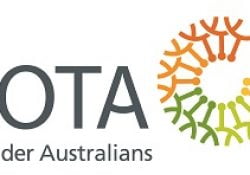
COTA Australia welcomes the opportunity to respond to the proposed regulatory model for Aged Care as detailed in A new model for regulating Aged Care Consultation Paper No. 2.
The consultation paper is a significant improvement from the first consultation paper providing more details on how safeguarding is defined and registration categories.
COTA Australia has long argued for a stronger regulatory approach to:
- act quickly against poor providers;
- address poor leadership and service culture;
- enhance clinical governance; and
- build staff numbers and quality.
A new, rights-based person-centric regulatory model based on human rights, grounded in a new Aged Care Act was a key recommendation of the Royal Commission into Aged Care Quality and Safety. This is an essential step to improving quality of care, the individuals experience of care, and through that restoring public confidence in the aged care system.
COTA Australia made a number of recommendations on how the proposed regulatory model could be improved. They are:
- Services delivered by a registered provider will have the aged care regulatory framework applied to ALL services delivered to aged care eligible clients (whether commonwealth funded or privately funded). This provision makes it clear to the older person how they are protected. These obligations will apply to all subcontractors of the registered providers, including non-registered service providers delivering services on behalf of the registered provider. It will also remove the bulk of risk where an older person may assume their protections service their entire aged care services, not simply those tied to commonwealth funds.
- Where an older person, in agreement with their assessor or care partner, determines that a service should be purchased from unregistered providers, either via funds transferred from the commonwealth to the older person or the unregistered provider, the provider should be required to meet the of Code of Conduct and operate under the Complaints, regime as occurs in the NDIS. Undertaking steps to establish regulatory system to align a single Code of Conduct, worker registration and screening processes across Aged Care, Disability Support and Veterans Care. This is currently reflected in the Governments work in the Care and Support Economy Taskforce and should be expedited as part of the new Aged Care Act.
- Better explanation of how consumer protections beyond the Code of Conduct, such as those found in Standard 1 ‘The Person’ will apply to services registered under Categories 1 – 3 need to be included. Once the Statement of Rights is released for consultation, it may be that making clearer the Statement of Rights applies to all service providers will be sufficient. However, based on the consultation paper there appear to be many consumer protections missing.
- Reviewing the appropriateness of having ‘domestic assistance’ and ‘personal care’ in different registration categories with significantly different regulatory approaches. In the current environment, of not requiring any mandatory qualifications or incentivising qualifications within the award, the same worker may deliver both of these services, sometimes in the same shift. The proposed approach risks some organisations and some sole trader provider/workers, not delivering one service type due to the added regulatory burden. This risks a reduced number of available workers to deliver personal care services within the aged care system. Whilst there are some complexities, personal care can’t really be defined as a clinical or specialised support. Personal care is not regulated by AHPRA, while the other kinds of supports in Category 4 are subject to government or industry regulation.
- Implementing enforcement measures, with significant penalties including criminal offences and compensation measures, as part of the new Aged Care Act.
- Establishing a clear implementation date for star ratings in home and community aged care services.
- Providing substantive details on the operation of ‘restorative justice’ type complaints processes for consultation before the implementation of the new Aged Care Act.
- A program to inform and support older people using aged care services in the transition to a new regulatory model. This may require funding to be provided.
- Producing a range of information products and conducting a program of consultation forum for all stakeholders particularly older people on the concept of relational regulation. For example:
o Collating all information on rights and obligations across the various current and new regulatory model/tools. An older person should then be able to search for all the provider obligations (which may create some consumer rights) across the various regulatory tools. Ensure searching can use Legal Name, Known as, Site Name, Site Known As or any other business name associated in the delivery of services. Link this information within existing websites of My Aged Care and the Regulator.
o Establishing a ‘Charter of Rights’ (or other mandatory communication piece) that is given to all new clients explaining, in one plain-language document, all the major rights from across the various regulatory tools and linking to more plain-language explanations about the detail of each of those regulatory tools.
o Create a central information hub on rights under the new Aged Care Act and the regulatory framework for older people using aged care services. This would include more detailed information on the rights enforced through Statement of Rights, Code of Conduct, Provider Obligations and the Regulator’s complaints processes, along with educative information on Australian Consumer Law and explaining major issues within aged care such as the right to take risks, the right to choose if and how your services are delivered, and the right to be actively involved in your care/support delivery (self-management).


